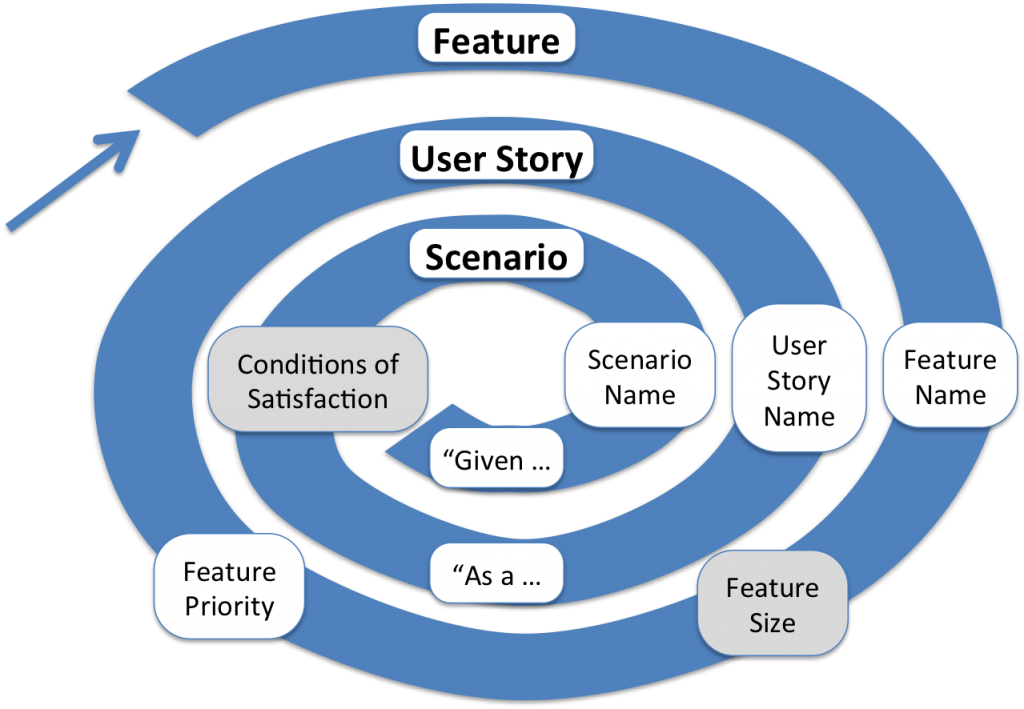The Iterative Incremental approach inherent in Agile applies to delivered functionality but also to the requirements elicitation part of the process.
I like to refine requirements over time. Start high level, just enough to remind us to have a conversation, then fill in the detail just as we need it. What starts as a simple name of an Epic Feature will turn into multiple User Stories each with several Scenarios. But you don’t need all of that at the start.
The iterative nature of requirements definition is suggestive of a spiral process – what my daughter would call a “snail”:
